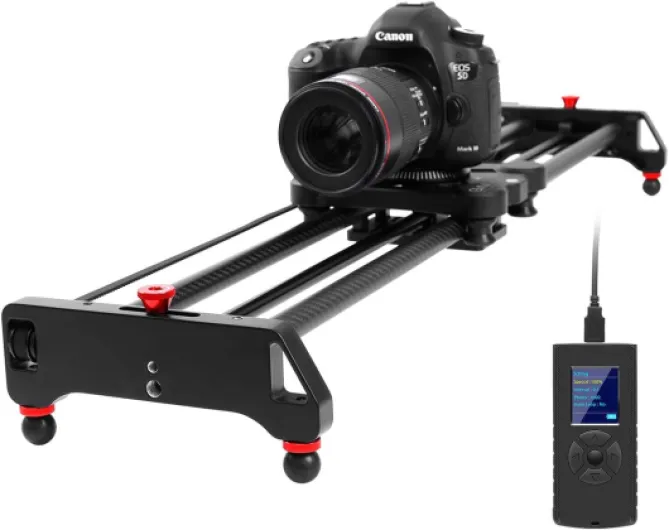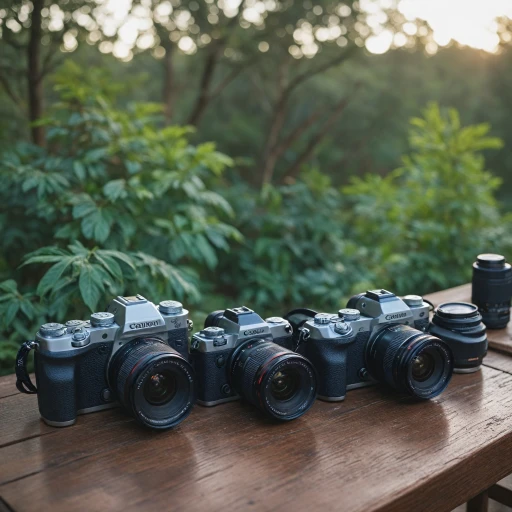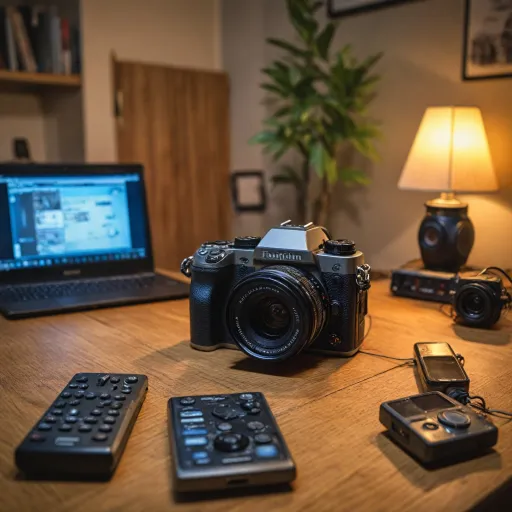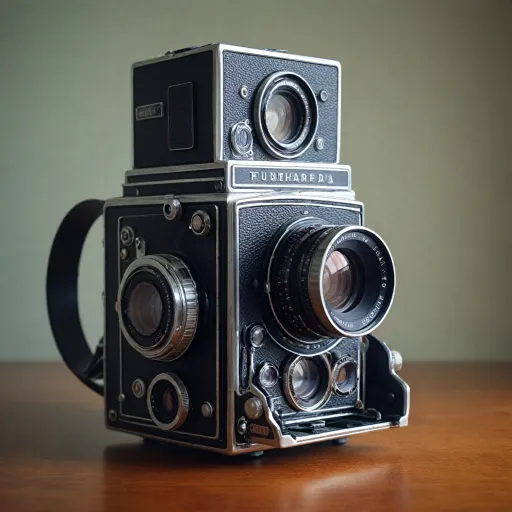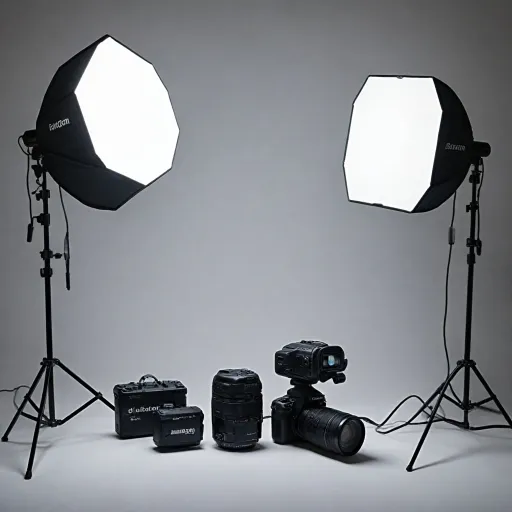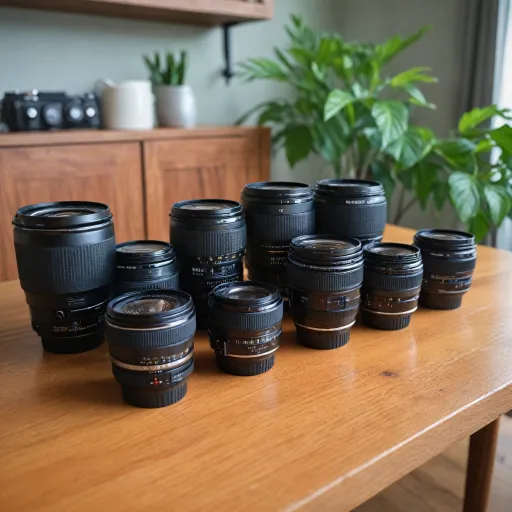
Understanding the basics of a camera dolly
What Makes a Camera Dolly Essential in Filmmaking?
A camera dolly is a specialized cart or platform designed to move a camera smoothly along a track or flat surface. Unlike a regular tripod, a dolly allows for dynamic camera movements, creating shots that glide through a scene. This movement can add depth, emotion, and a professional touch to your video projects. Dollies are often used in both original and commercial productions, from indie films to high-end commercials, because they help filmmakers achieve cinematic results without the need for expensive equipment.
How Does a Dolly Differ from a Slider or Tripod?
While camera sliders and tripods are common tools for stabilizing shots, a dolly offers more flexibility. A slider is typically limited to short, linear movements, making it great for close-ups or product shots. In contrast, a dolly can move the camera over longer distances and in more directions, especially when paired with a dolly track. This makes it possible to follow action, reveal new elements in a scene, or create dramatic push-ins and pull-outs. For more on the differences and creative possibilities, you might find this guide to versatile camera supports helpful.
Key Components and Price Considerations
- Dolly Cart: The base that holds the camera. Heavy duty options are available for larger video cameras.
- Dolly Track: Rails that guide the dolly for smooth, controlled movement. Track dollies are sold as complete systems or as separate parts.
- Camera Mount: Where you attach your camera, often compatible with standard tripod heads or sliders.
- Wheels and Bearings: Quality wheels ensure a smooth ride, reducing unwanted vibrations in your shot.
Prices for camera dollies vary widely. You can find entry-level products on sale for a lower price, while professional systems with free shipping and heavy duty features are sold at a regular price or even a price save during system sales. Always check the cart total and compare the regular price to the sale price to get the best value.
When to Use a Camera Dolly
Camera dollies are ideal when you want to move the camera smoothly through a scene, whether it’s following a subject, revealing a new view, or creating a sense of motion. They work well with a variety of lenses and filters, and can be combined with sliders or tripods for even more creative options. If you’re looking to elevate your filmmaking, understanding how to set up and use a dolly camera system is a key step. Later sections will cover the different types of dollies, setup tips, and creative techniques to help you get the most from your investment.
Types of camera dollies and their uses
Comparing Popular Camera Dolly Designs
When you’re looking to move your camera smoothly for dynamic shots, understanding the different types of camera dollies is essential. Each design offers unique advantages, and knowing which one fits your project can help you save both time and budget. Here’s a breakdown of the main types you’ll find on the market:
- Track Dollies: These use rails or tracks to guide the dolly, ensuring stable, repeatable camera movements. Track dollies are ideal for cinematic shots where you want to glide past your subject or follow action. They’re often sold as heavy duty systems, and the price can vary depending on the length and quality of the dolly track. Some products come with free shipping or are available on sale, so it’s worth comparing regular price and sale price before you buy.
- Cart-Style Dollies: Resembling a small cart, these dollies can be used with or without tracks. They’re flexible for indoor and outdoor shoots, and many models are designed to support a video camera or even a full tripod. Cart dollies are popular for their portability and ease of setup, but keep in mind the total weight (cart total) they can handle.
- Sliders: While technically a type of dolly, camera sliders are more compact and are perfect for short, controlled movements. Sliders are great for close-up shots or when you want to add subtle movement to your view. They’re often lighter and more affordable, making them a good entry-level product for those new to camera movements. You can find sliders in a range of lengths and price points, including options with filters for creative effects.
Some filmmakers use a combination of dollies and sliders to achieve original camera movements. For example, a track dolly might be used for a dramatic reveal, while a slider can add a gentle push-in on a subject. When comparing products, look at features like lens compatibility, system sale options, and whether the dolly is sold with accessories like filters or a tripod mount.
If you’re interested in exploring more creative mounting solutions, check out this guide on the versatility of the Joby GorillaPod for digital cameras. It’s a helpful resource for understanding how different supports can expand your shot options beyond traditional dollies and sliders.
Remember, the right dolly system can transform your filmmaking by making your camera movements smoother and more professional. Always consider your project’s needs, the regular price versus sale price, and the specific features of each dolly before making a purchase.
Setting up a camera dolly for smooth shots
Getting Your Dolly Ready for Action
Setting up a camera dolly correctly is crucial for achieving smooth, professional-looking shots. Whether you’re using a heavy duty track dolly or a compact camera slider, the process shares some fundamentals. Here’s a practical approach to preparing your dolly system for filming:
- Choose the Right Surface: Start by finding a level, stable surface for your dolly track or slider. Uneven ground can cause unwanted bumps in your camera movements, even with the best dollies or sliders.
- Assemble the Track or Slider: Lay out the dolly track or set up your slider according to the product instructions. Ensure all connections are tight and secure. For longer shots, connect multiple track sections, making sure the joints are flush to avoid jolts.
- Mount the Camera: Attach your video camera or DSLR to the dolly’s tripod mount. Double-check that the lens is clean and filters are properly attached. If you’re unsure about cleaning your camera, check this guide on optimal camera cleaning for best practices.
- Balance and Test: Before rolling, gently move the dolly or slider back and forth to check for any resistance or wobble. Adjust the wheels or cart system as needed. Some dollies offer adjustable tension or wheel alignment for smoother operation.
- Secure Cables and Accessories: Keep cables, batteries, and accessories out of the dolly’s path. Use cable ties or clips to prevent snags during movement, which can ruin a shot or damage equipment.
Many camera dollies and sliders are sold as kits, sometimes with free shipping or sale price options. When comparing price, check if the regular price includes essential accessories like a tripod mount, extra track sections, or a carrying cart. Saving on a system sale can be tempting, but always prioritize stability and build quality over a lower price sold.
For those using filters or specialty lenses, make sure your setup allows for quick adjustments without removing the camera from the dolly. This saves time and keeps your workflow efficient. If you’re working with a heavy duty dolly, double-check the weight limits and cart total before mounting larger video cameras or lens systems.
Taking the time to set up your dolly camera system properly ensures you get the most out of your investment, whether it’s an original product or a regular model. Smooth camera movements not only elevate your filmmaking but also help you find the creative shot that sets your work apart.
Creative techniques with a camera dolly
Unlocking Dynamic Camera Movements
Using a camera dolly opens up a world of creative possibilities for filmmakers. Unlike a regular tripod or slider, a dolly allows you to move the camera smoothly along a track, creating shots that feel immersive and professional. Whether you’re working with a heavy duty dolly system or a compact cart, the ability to move the camera with precision can transform the visual storytelling in your project.
- Tracking shots: By placing your camera on a dolly track, you can follow a subject or reveal a scene with a steady, cinematic motion. This is a technique often used to build tension or highlight important details.
- Push-ins and pull-backs: Move the dolly closer or further from your subject to create emotional impact. A slow push-in can draw viewers into a character’s world, while a pull-back can reveal context or scale.
- Parallax effects: With the camera moving sideways on a track dolly, foreground and background elements shift at different rates. This adds depth and interest to your shot, something regular sliders or tripods can’t easily achieve.
- 360-degree views: Some dollies and tracks allow for circular movement around a subject, giving you the freedom to capture original perspectives and dynamic angles.
Combining Dollies with Other Tools
For even more creative control, filmmakers often pair dollies with filters, different lenses, or even a camera slider. For example, using a wide lens on a dolly can exaggerate movement and make your shot feel more dramatic. Adding filters can help control light and color, enhancing the mood of your scene.
Maximizing Value and Flexibility
When considering the price of a dolly or slider, think about how often you’ll use these creative techniques. Some products are sold as part of a system sale, including tracks and carts, which can save you money compared to buying each piece separately. Always check if the sale price or regular price fits your budget and needs. Free shipping and cart total discounts are sometimes available, especially during product sales.
Tips for Standout Shots
- Plan your camera movements ahead of time to avoid shaky footage.
- Test your dolly track for bumps or uneven spots before shooting.
- Experiment with different camera dollies and sliders to find the best fit for your style.
- Don’t skip content rehearsals—practice makes perfect when it comes to smooth dolly shots.
By mastering these creative techniques, you can elevate your filmmaking and make your work stand out, whether you’re using an original dolly camera system or exploring new products on sale. Always consider the total value, including price save options and product features, before making a purchase.

- + Heavy Duty capacity of 33lbs
- + 2 inch Rubber Wheels for smooth movement
- + Adjustable Leg Mount for versatility
- + Includes Carry Bag for easy transport
- + Compatible with Canon, Nikon, Sony DSLR cameras and camcorders
Common challenges and troubleshooting tips
Overcoming Common Dolly Issues
Even with the best camera dolly or slider, filmmakers often face challenges that can disrupt a smooth shot. Understanding these issues and knowing how to troubleshoot can save time and frustration on set, especially when working with heavy duty systems or when your cart total is tight.
- Track Problems: Uneven dolly track or debris can cause unwanted bumps in your footage. Always inspect and clean the track before use. For regular price or sale price dollies, investing in quality track can make a big difference in the final shot.
- Camera Stability: If your camera shakes or wobbles, double-check the tripod mount and the dolly cart. Using a heavy duty tripod and ensuring the camera is tightly secured helps maintain a steady view. Filters and lens attachments should also be checked for tightness.
- Noise Issues: Some dollies and sliders, especially those at a lower price point, can produce noise that microphones pick up. Lubricate wheels and joints, and consider using rubberized wheels for a quieter move camera experience.
- Weight Limits: Overloading your dolly with a large video camera or extra gear can strain the system. Always check the product specifications and avoid exceeding the recommended weight, whether you’re using a regular or original model.
- Alignment and Calibration: Misaligned dollies sliders or track dolly systems can cause the camera to drift. Take time to align the dolly track and calibrate the system before each shot, especially if you’ve recently changed lens or filters.
Quick Fixes and Pro Tips
- Keep spare parts like wheels and screws in your kit, especially if you’ve bought a dolly on sale or at a price save.
- Test your setup with a short move before rolling on the actual shot. This helps you find and fix issues early.
- If you’re working outdoors, bring a small brush to clear the track and protect your gear from dust.
- For smoother camera movements, consider adding a camera slider to your system sale purchase. Sliders can offer more control for shorter shots.
- Always review your footage after each take to catch problems before moving on.
By addressing these common challenges, you can get the most out of your camera dolly, whether you’re using a regular price model or a premium product. Remember, a little preparation goes a long way in achieving professional, cinematic results with your camera movements.
Choosing the right camera dolly for your project
Key factors to weigh before buying
When searching for the right camera dolly, it’s important to match your needs with the product’s features and your budget. Not all dollies are built the same—some are designed for heavy duty video camera setups, while others are compact for lighter gear. Consider the type of shots you want to achieve, the environments you’ll be filming in, and how much flexibility you need for camera movements.
- Compatibility: Make sure the dolly fits your camera, lens, and tripod system. Some dollies work best with specific sliders or track systems, while others are more universal.
- Portability: If you move camera setups often, a lightweight dolly or a camera slider might be more practical than a heavy duty cart or track dolly.
- Track options: Decide if you need a dolly track for smooth, long shots, or if a regular slider will do. Track dollies offer more stable movement but can be bulkier to transport.
- Build quality: Look for sturdy materials and reliable wheels or rails. A well-built dolly ensures smooth shots and can handle the weight of your video camera and accessories.
- Creative flexibility: Some dollies and sliders allow for more creative camera movements, like curves or 360-degree views. Think about the types of shots you want to create.
Comparing price and value
Price is a major factor for most filmmakers. The regular price of a camera dolly can vary widely, from affordable entry-level sliders to high-end heavy duty systems. Watch for sale price offers or system sale bundles that include tracks, filters, or other accessories. Some retailers offer free shipping or discounts on cart total, which can help you save.
| Product Type | Regular Price | Sale Price | Key Features |
|---|---|---|---|
| Camera Slider | $100 | $80 | Portable, easy setup, straight shots |
| Track Dolly | $400 | $350 | Stable, long tracks, heavy duty |
| Cart Dolly | $250 | $200 | Flexible movement, supports larger cameras |
Always check if the price sold includes all necessary parts, like tracks or filters. Some dollies are sold as standalone products, while others come as part of a system. Compare the original price with the current sale price to find the best deal and save on your purchase.
Where to find the right dolly
Camera dollies and sliders are available from specialized video equipment retailers, online stores, and sometimes in system sale bundles. Look for detailed product descriptions, customer reviews, and clear information about what’s included in the box. If you’re unsure, reach out to the seller to ask about compatibility with your camera, lens, and tripod. Don’t forget to factor in shipping costs and return policies before you finalize your cart total.
Final tips for your dolly purchase
- Decide if you need a dolly for regular use or just for a specific project.
- Think about future upgrades—some dollies can be expanded with extra tracks or filters.
- Check for free shipping or bundle deals to save on your purchase.
- Read reviews to see how the dolly performs in real-world filmmaking situations.
By carefully considering these factors, you’ll be able to find a camera dolly that fits your creative vision and budget, making your next shot smoother and more professional.

